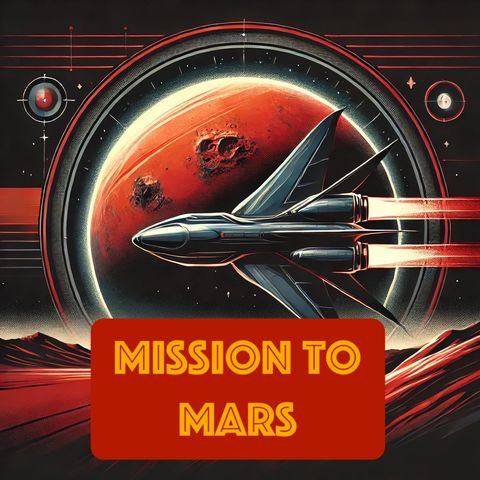Unveiling the Mysteries of the Red Planet: A Comprehensive Guide to Mars' Environment, Moons, and Potential for Human Exploration

Descarga y escucha en cualquier lugar
Descarga tus episodios favoritos y disfrútalos, ¡dondequiera que estés! Regístrate o inicia sesión ahora para acceder a la escucha sin conexión.
Unveiling the Mysteries of the Red Planet: A Comprehensive Guide to Mars' Environment, Moons, and Potential for Human Exploration
Esta transcripción es generada automáticamente. Ten en cuenta que no se garantiza una precisión absoluta.
Descripción
Mars, often referred to as the Red Planet, has captured human curiosity for centuries, particularly for its potential as a host for life and a future hub for human colonization....
mostra más### Mars at a Glance
Mars is the fourth planet from the Sun, situated about 227.9 million kilometers away, on average. It is about half the diameter of Earth, with a diameter of approximately 6,779 kilometers. Despite its smaller size, Mars features some of the most intriguing geographical formations in our solar system, including Olympus Mons, the tallest volcano, and Valles Marineris, one of the largest canyons.
### Temperature
The Martian climate is less hospitable than Earth's, with temperatures that can vary wildly. Temperatures on Mars can plunge to as low as -125 degrees Celsius (-195 degrees Fahrenheit) during winter at the poles, and reach as high as 20 degrees Celsius (68 degrees Fahrenheit) on a summer day near the equator. Due to the thin atmosphere, which is 95% carbon dioxide, these temperatures rarely feel as extreme as they would under comparable conditions on Earth.
### Moons
Mars is orbited by two small moons, Phobos and Deimos. Both are irregularly shaped, possibly captured asteroids from the nearby asteroid belt. Phobos, the larger of the two, is gradually drawing closer to Mars and is expected to either crash into the planet or break apart and form a ring system in about 50 million years.
### Gravity
Gravity on Mars is about 38% of Earth's, which means one could leap nearly three times higher on Mars than on Earth. This reduced gravity poses unique challenges for human physiology and will be a critical consideration in the planning of manned missions.
### Traveling to Mars
Reaching Mars is no small feat. It involves crossing millions of kilometers of space, requiring advanced rocket technology to escape Earth's gravity and enter a Hohmann transfer orbit—a highly efficient path that takes spacecraft from Earth's orbit to intersect Mars. Missions must be precisely timed to take advantage of the alignment between the orbits of Earth and Mars, which occurs approximately every 26 months, during a Mars opposition (when Mars and the Sun are on directly opposite sides of Earth).
The journey to Mars can take about six to nine months, depending on the speed of the launch, the alignment of the planets, and the specifics of the mission trajectory. Upon arrival, entering Mars' atmosphere and landing also present significant technical challenges due to the thin Martian atmosphere, which is less capable of slowing down a spacecraft.
### Current and Future Missions
Numerous spacecraft from various global space agencies have visited Mars, including rovers, landers, and orbiters. Noteworthy missions like NASA’s Perseverance Rover, which landed in 2021, are designed to extend our understanding of the planet's geology and climate, and to assess its past habitability. Looking ahead, plans for human missions are being discussed, with NASA and other entities aiming to send astronauts to Mars possibly in the 2030s.
In preparing for these future endeavors, every mission to Mars yields critical data that enhances our understanding of the feasibility of long-term human survival on the Red Planet. The implications of such missions are profound, potentially paving the way for sustainable off-Earth living, which could ensure the long-term survival of humans.
With each successful mission, we come closer to turning the dream of a manned Mars exploration into a reality, unlocking the secrets of the planet while also learning more about our own capabilities and limits in the vast, uncharted expanse of space.
Información
| Autor | QP-4 |
| Organización | William Corbin |
| Página web | - |
| Etiquetas |
Copyright 2024 - Spreaker Inc. an iHeartMedia Company

Comentarios